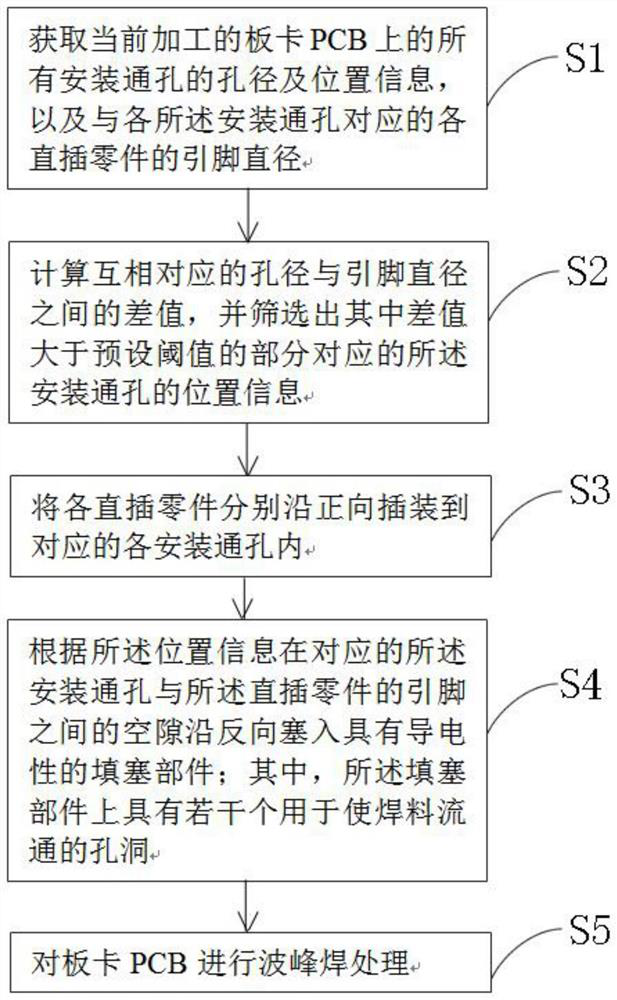Direct-insertion part tinning optimization welding method and system
A welding method and parts technology, which is applied in the field of servers, can solve problems such as time-consuming and labor-intensive, poor welding, non-standard, etc.
- Summary
- Abstract
- Description
- Claims
- Application Information
AI Technical Summary
Problems solved by technology
Method used
Image
Examples
Embodiment Construction
[0051] The following will clearly and completely describe the technical solutions in the embodiments of the present invention with reference to the accompanying drawings in the embodiments of the present invention. Obviously, the described embodiments are only some, not all, embodiments of the present invention. Based on the embodiments of the present invention, all other embodiments obtained by persons of ordinary skill in the art without making creative efforts belong to the protection scope of the present invention.
[0052] Please refer to figure 1 , figure 1 It is a method flowchart of a specific embodiment provided by the present invention.
[0053] In a specific embodiment provided by the present invention, the tin optimization soldering method on in-line parts mainly includes five steps, which are:
[0054] S1. Obtain the aperture and position information of all the installation through holes on the currently processed board PCB, and the pin diameters of the in-line ...
PUM
 Login to View More
Login to View More Abstract
Description
Claims
Application Information
 Login to View More
Login to View More - R&D
- Intellectual Property
- Life Sciences
- Materials
- Tech Scout
- Unparalleled Data Quality
- Higher Quality Content
- 60% Fewer Hallucinations
Browse by: Latest US Patents, China's latest patents, Technical Efficacy Thesaurus, Application Domain, Technology Topic, Popular Technical Reports.
© 2025 PatSnap. All rights reserved.Legal|Privacy policy|Modern Slavery Act Transparency Statement|Sitemap|About US| Contact US: help@patsnap.com



